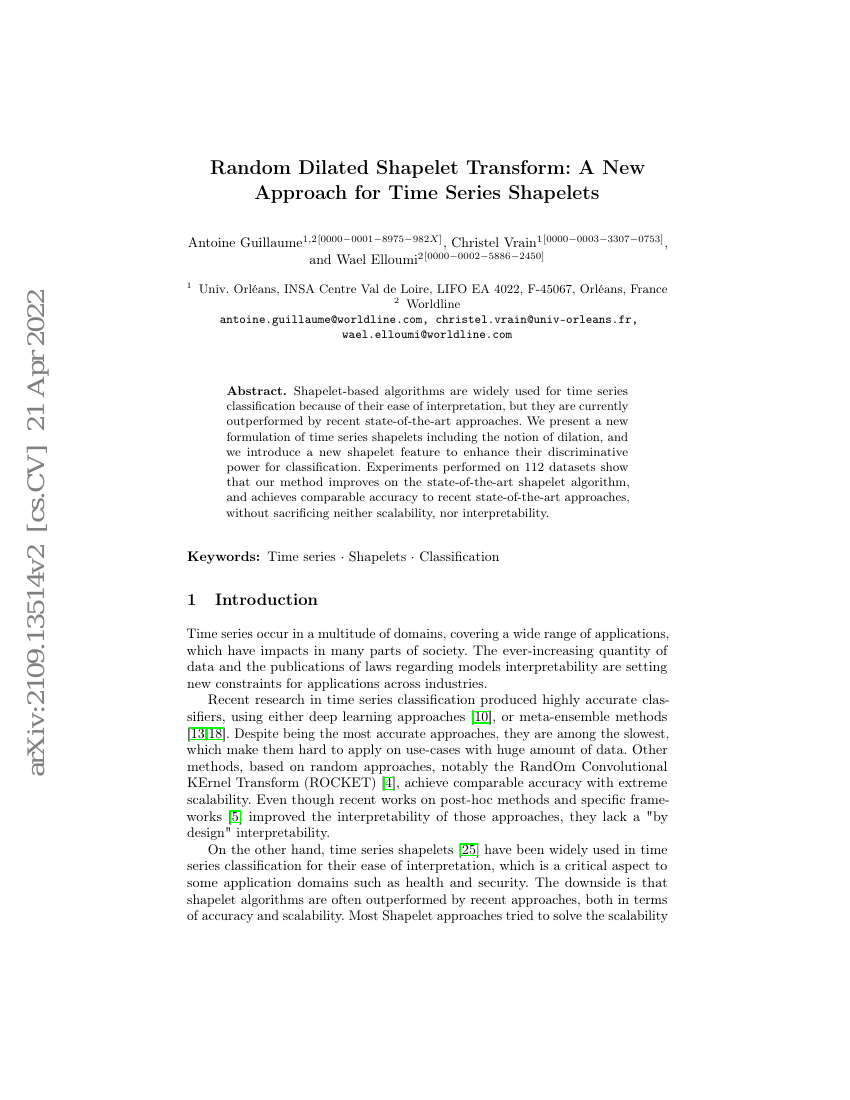Command Palette
Search for a command to run...
Random Dilated Shapelet Transform: A New Approach for Time Series Shapelets
Antoine Guillaume Christel Vrain Elloumi Wael

Abstract
Shapelet-based algorithms are widely used for time series classification because of their ease of interpretation, but they are currently outperformed by recent state-of-the-art approaches. We present a new formulation of time series shapelets including the notion of dilation, and we introduce a new shapelet feature to enhance their discriminative power for classification. Experiments performed on 112 datasets show that our method improves on the state-of-the-art shapelet algorithm, and achieves comparable accuracy to recent state-of-the-art approaches, without sacrificing neither scalability, nor interpretability.
Code Repositories
Benchmarks
| Benchmark | Methodology | Metrics |
|---|---|---|
| time-series-classification-on-acsf1 | R_DST_Ensemble | Accuracy(30-fold): 0.8433333333333333 |
| time-series-classification-on-adiac | R_DST_Ensemble | Accuracy(30-fold): 0.80230179028133 |
| time-series-classification-on-arrowhead | R_DST_Ensemble | Accuracy(30-fold): 0.8912380952380949 |
| time-series-classification-on-beef | R_DST_Ensemble | Accuracy(30-fold): 0.7511111111111111 |
| time-series-classification-on-earthquakes | R_DST_Ensemble | Accuracy(30-fold): 0.7390887290167865 |
| time-series-classification-on-ecg200 | R_DST_Ensemble | Accuracy(30-fold): 0.9016666666666667 |
| time-series-classification-on-ecg5000 | R_DST_Ensemble | Accuracy(30-fold): 0.9467629629629628 |
| time-series-classification-on-wafer | R_DST_Ensemble | Accuracy: 0.9999513303049968 Accuracy(30-fold): 0.9999513303049968 |
Build AI with AI
From idea to launch — accelerate your AI development with free AI co-coding, out-of-the-box environment and best price of GPUs.